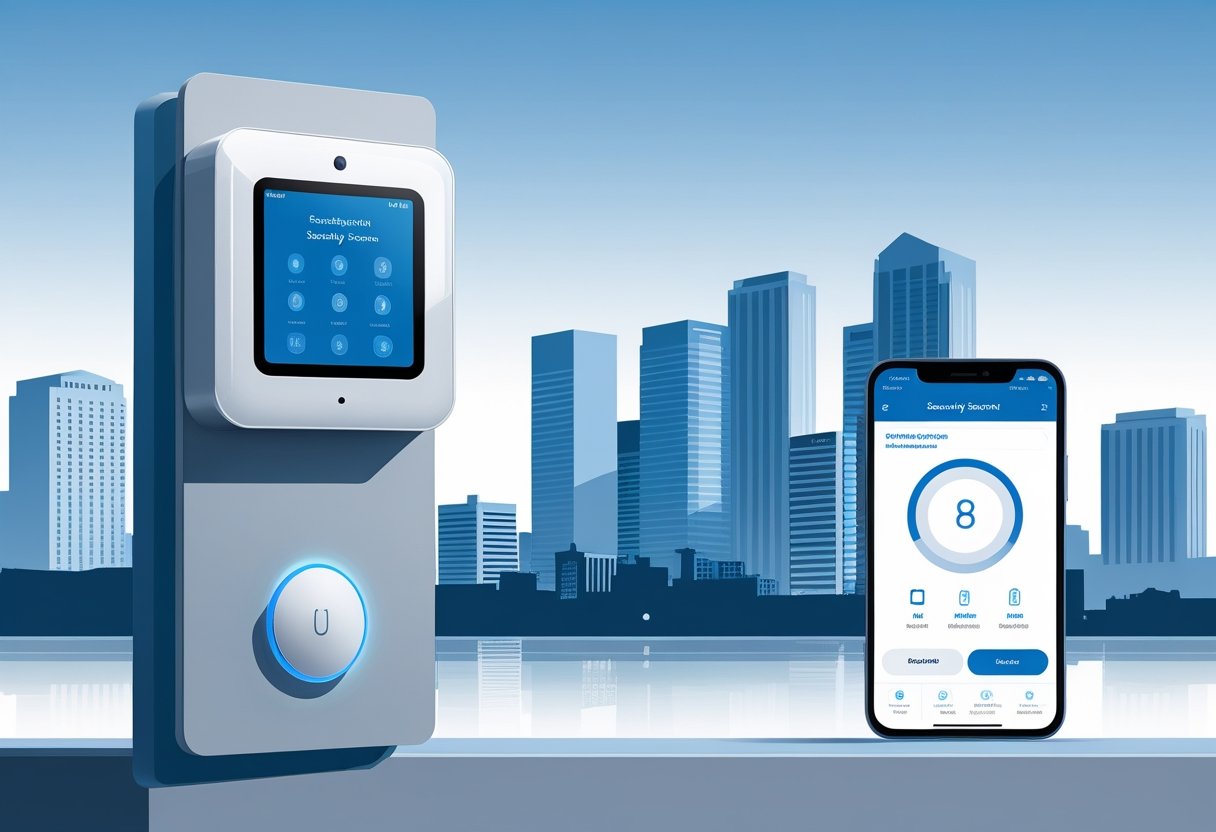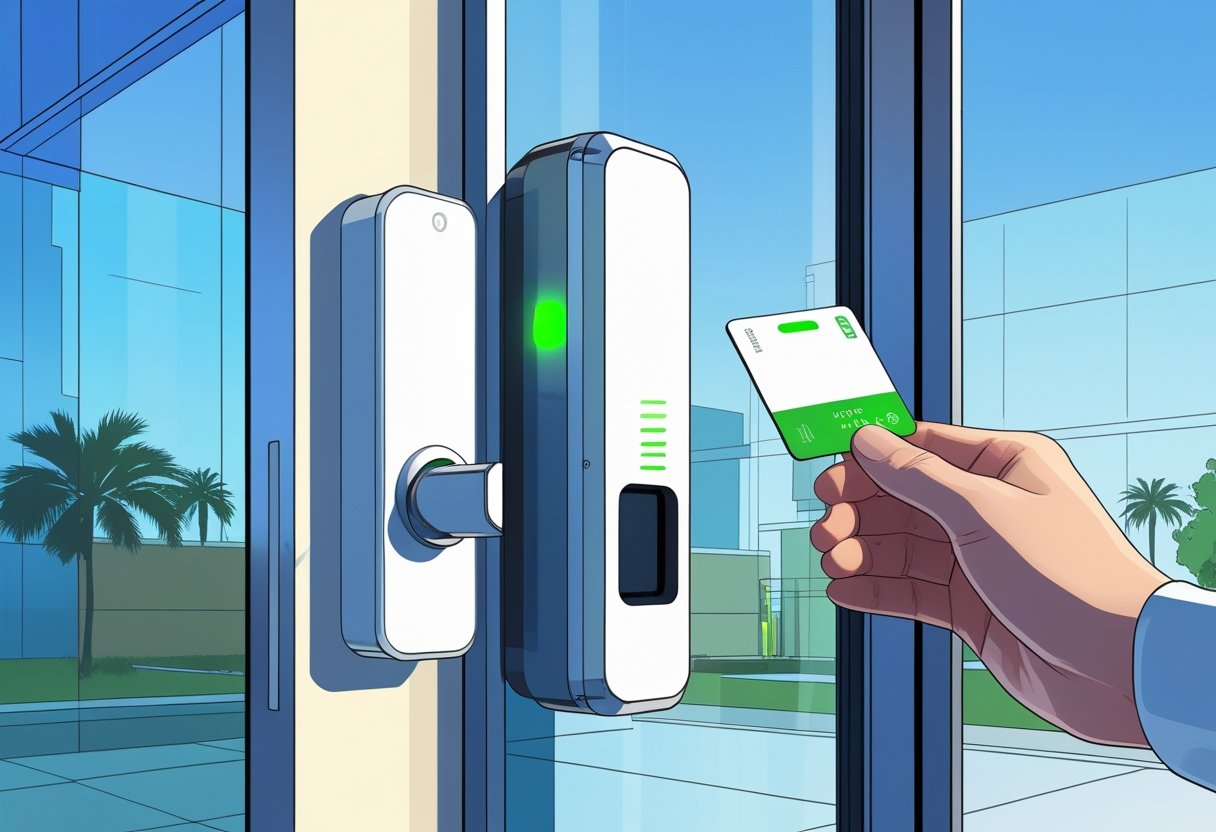When it comes to ensuring the safety of your property and its occupants, a centralized fire alarm control panel is essential. This system provides a unified command center that monitors all fire detection devices, enhancing your ability to respond quickly in emergencies. You can trust that a well-designed fire alarm system not only meets regulatory standards but also significantly boosts life safety measures.
In the greater Houston area, having a reliable centralized fire alarm control panel allows you to connect multiple detectors and alarms seamlessly. This integration helps streamline monitoring and ensures rapid responses to any potential fire threats. By investing in such a system, you can maintain peace of mind knowing that your property is consistently under vigilant protection.
Understanding how a centralized fire alarm control panel operates is vital to maximizing its effectiveness. As technology advances, these systems become more sophisticated, offering features that simplify maintenance and improve safety protocols. With the right knowledge, you can ensure your fire safety measures are robust and comprehensive.
What Is a Centralized Fire Alarm Control Panel?
A centralized fire alarm control panel (FACP) serves as the core component of a fire alarm system. It integrates various detection devices and allows for efficient monitoring and management of fire safety measures in your facility.
Purpose and Importance in Fire Safety
The primary purpose of a centralized fire alarm control panel is to ensure rapid detection and response to fire emergencies. By connecting multiple fire detection devices—such as smoke detectors, heat sensors, and manual pull stations—it allows for coordinated monitoring across the entire building.
This integration is crucial for maintaining safety, as it provides real-time alerts and minimizes response times. A FACP can also differentiate between false alarms and genuine threats, which reduces unnecessary evacuations and disruptions. Additionally, it enhances safety compliance, ensuring that your facility meets local fire safety regulations, which is critical in the greater Houston area.
Core Functions and Operations
A fire alarm control panel operates by receiving signals from various input devices throughout your building. These signals are processed to determine the appropriate response, which could include triggering alarms or activating emergency systems like sprinklers.
Key functions include:
- Alarm Management: It generates alarms to notify occupants during a fire event, using sirens, strobe lights, or vocal announcements.
- System Diagnostics: The panel continuously monitors the health of connected devices, identifying faults or malfunctions promptly.
- Control Features: You can silence alarms, reset devices, and perform system tests easily through the control panel interface.
With these operational capabilities, a centralized fire alarm control panel is essential for the effective management of fire safety in your property.
Key Components of Centralized Fire Alarm Control Panels
Centralized fire alarm control panels consist of various components that work together to ensure effective fire detection and response. Understanding these key parts is essential for maintaining safety and compliance in your facility.
Detection Devices: Smoke and Heat Detectors
Detection devices are vital for identifying potential fire hazards. Smoke detectors use photoelectric or ionization technology to sense smoke particles in the air. Photoelectric detectors excel at detecting smoldering fires, while ionization detectors are better suited for fast-flaming fires.
Heat detectors monitor temperature changes within the environment. They are beneficial in areas prone to false alarms, as they only activate based on significant increases in heat. Both detectors send alarm signals to the fire alarm control panel, enabling swift responses. Regular maintenance and testing of these devices ensure optimal functionality and reliability.
Initiating Devices: Manual Pull Stations
Manual pull stations provide a crucial way for occupants to initiate an alarm in the event of a fire. These devices are prominently located throughout a building to ensure accessibility. When activated, they send a direct signal to the centralized control panel, alerting it to a potential emergency.
It’s essential to install these devices in strategic locations, such as near exits and hallways. Regular inspection helps maintain their visibility and functionality, ensuring that they are always operational when needed. Educating occupants on how to use manual pull stations can greatly enhance response times during a fire emergency.
Notification Appliances: Strobes, Horns, and Speakers
Notification appliances are designed to alert building occupants to evacuate. Strobe lights provide a visual warning, particularly useful for those who are hearing-impaired. They should be strategically placed throughout the facility to ensure maximum visibility during an emergency.
Horns and speakers serve as audible alarms that deliver critical instructions. Horns provide loud, attention-grabbing sounds, while speakers can relay specific messages or instructions. This combination helps ensure that all occupants receive timely alerts and understand evacuation procedures. Compatibility with the fire alarm control panel is essential for synchronized activation during emergencies.
Power Supply and Backup Systems
A reliable power supply is critical for the functionality of fire alarm systems. The centralized fire alarm control panel typically has a primary power source supported by a battery backup. This ensures operation during power outages.
Battery backups are essential for maintaining system integrity in emergencies, guaranteeing that alarms can still activate when needed. Regular testing of the power supply and backup systems is necessary to confirm they function correctly. This proactive approach minimizes the risk of system failure during critical situations, ensuring that all detection and notification systems remain operational.
Types of Centralized Fire Alarm Control Panels
Understanding the types of centralized fire alarm control panels is essential for selecting the right system for your facility. Each type serves different operational needs and has specific functionalities.
Conventional Panels
Conventional panels are among the simplest types of fire alarm control systems. They break a building into distinct zones or sections. This zoning is helpful for identifying where an alarm has been triggered but does not provide detailed information about the specific device involved.
In a conventional system, all detectors wired to a zone will indicate an alarm if any one of them activates. This can be less efficient because it might require personnel to investigate each device within the affected zone. These panels are cost-effective and suitable for smaller buildings in the greater Houston area.
Addressable Panels
Addressable panels offer a more advanced approach. They can identify the exact location of a triggered alarm, which significantly enhances response time. In this system, each device has a unique address, providing real-time monitoring and data about each individual unit.
This specificity allows for quicker assessments and action during an emergency. Addressable panels are ideal for larger facilities where rapid identification of the problem is critical. They also support integration with other building management systems, which increases their value in complex environments.
Coded and Multiplex Fire Alarm Panels
Coded fire alarm panels use pre-set codes to communicate the status and location of alarms. This system streamlines communication and allows for immediate understanding of the situation without needing extensive verbal communication.
Multiplex panels, on the other hand, utilize a more sophisticated setup. They can monitor several points and devices using a single pair of wires, minimizing installation complexity. These systems are highly versatile and can manage extensive networks of devices while maintaining effective communication.
Both coded and multiplex systems are advantageous for large or complex facilities, ensuring efficient emergency response tailored to the specific needs of the building and its occupants.
Integration and Monitoring Capabilities
Effective integration and monitoring capabilities are essential to maximize the functionality of a centralized fire alarm control panel. By establishing seamless communication with various systems, you ensure comprehensive safety and efficient emergency responses. Key elements include communication with emergency services, remote monitoring through annunciator panels, and coordination with fire suppression systems.
Central Station and Emergency Service Communication
Your centralized fire alarm system should include robust communication interfaces to connect with local emergency services. This capability allows for automatic notifications to fire departments and emergency response teams when an alarm is triggered.
In the event of an alarm, the system can relay critical information such as the type and location of the incident. Quick access to this information enhances response times, ultimately ensuring safety.
Integration not only improves efficiency but can also include two-way communication, allowing emergency teams to query system status and diagnostics while en route.
Annunciator and Remote Interfaces
Annunciator panels serve as crucial interfaces that display the status of your fire alarm system. These panels provide real-time information on alarm conditions and system health at key locations around your facility.
You can enhance your monitoring capabilities through remote interfaces that allow for system management and oversight from multiple locations. This functionality is particularly useful for larger facilities or buildings with complex layouts.
Utilizing an annunciator panel reduces response time during emergencies by ensuring that personnel are immediately informed of any alarms or faults, allowing you to initiate necessary actions rapidly.
Integration with Fire Suppression and Building Systems
Integrating fire alarm systems with fire suppression systems, like sprinkler systems, is vital for a cohesive safety strategy. This synergy enables automatic activation of suppression systems when smoke or heat is detected.
Fire alarm systems can work with sprinkler flow switches to provide alerts when sprinklers have activated. Such integration ensures that the right actions occur without delay, greatly improving safety outcomes.
Additionally, incorporating communication with HVAC systems can improve airflow management during an emergency. This coordination can help to prevent smoke spread, effectively protecting both occupants and property.
Benefits and Advantages of Centralized Systems
Centralized fire alarm control panels provide significant benefits in fire safety systems. Their design enhances reliability, optimizes emergency response, and ensures compliance with established standards.
Enhanced Reliability and Monitoring
A centralized fire alarm system offers enhanced reliability by integrating multiple detectors and alarms into one cohesive unit. This setup enables continuous monitoring, allowing for real-time alerts and system health checks.
With interconnected devices, you can quickly identify potential issues and address them before they escalate. Regular system diagnostics ensure all components adhere to NFPA codes, reducing the chances of malfunction during critical moments.
Additionally, centralized panels simplify the maintenance process. You can monitor the status of all detectors and alarms from a single interface, making it easier to track performance and ensure compliance with fire protection regulations.
Improved Emergency Response Efficiency
In the event of a fire emergency, response time is crucial. A centralized fire alarm control panel can significantly improve the efficiency of emergency responses by providing immediate alerts to the appropriate personnel.
The system sends real-time notifications to emergency responders and facility managers. This feature ensures that everyone is informed simultaneously, reducing response times and potentially saving lives.
Moreover, central systems can automatically activate fire suppression systems, such as sprinklers, while simultaneously notifying authorities. This proactive approach allows for quicker action in mitigating threats, providing both safety and peace of mind.
Regulatory Compliance and Standards
Operating a centralized fire alarm system helps you maintain compliance with fire safety regulations mandated by organizations such as the NFPA. These systems must meet rigorous standards to ensure comprehensive fire protection.
Your central control panel serves as the focal point for all monitoring, allowing for easier audits and record-keeping. It simplifies adherence to local fire codes and standards, which is vital for any commercial property in the greater Houston area.
By implementing a centralized system, you demonstrate a commitment to fire safety, potentially lowering your insurance premiums and elevating the safety standards of your facility. This proactive strategy not only protects occupants but also aligns with industry best practices.
Selecting and Maintaining a Centralized Fire Alarm Control Panel
Choosing the right centralized fire alarm control panel requires attention to specific criteria to ensure it meets your needs. Additionally, proper installation, programming, and ongoing maintenance are vital for optimal functionality and compliance with safety standards.
System Selection Criteria
When selecting a centralized fire alarm control panel, consider factors such as compatibility, capacity, and features. Ensure the panel can support the number and types of devices in your system, including smoke detectors, heat sensors, and alarms.
Key Features to Evaluate:
- Compatibility: Verify that the control panel works with existing detectors and alarms.
- Scalability: Choose a panel that can expand as your building or needs grow.
- User Interface: Look for intuitive controls for easy operation and programming.
- Compliance: Ensure the panel meets local codes and national standards.
Pay special attention to the manufacturer's reputation and warranty offerings to secure long-term support.
Installation and Programming Considerations
Proper installation is crucial for a reliable centralized fire alarm control panel. Engage certified technicians experienced in the specific regulatory requirements for your area, particularly in the greater Houston area.
Installation Steps:
- Location: Select a central, accessible location for the panel.
- Power Supply: Ensure adequate power sources, both primary and secondary.
- System Configuration: Program the panel according to your building’s layout and specific fire safety needs.
After installation, conduct comprehensive system tests to verify that all components communicate effectively. This initial setup is essential for ensuring optimal performance of the fire alarm system.
Maintenance and Testing Best Practices
Regular maintenance is critical for the reliability of your centralized fire alarm control panel. Establish a routine inspection schedule that includes both visual checks and functional tests.
Maintenance Checklist:
- Monthly Tests: Conduct routine tests on all devices and alarms to ensure they are operational.
- Annual Inspections: Have professionals perform annual assessments and servicing.
- Update Documentation: Keep accurate records of all maintenance activities and any system changes.
Additionally, stay informed about software updates and advancements in fire alarm technology. Implementing timely upgrades can enhance your system's performance and compliance.
Frequently Asked Questions
Understanding fire alarm control panels is crucial for effective safety management. You may have specific questions regarding types, installation, maintenance, and troubleshooting. Here are some frequently asked questions to help clarify these important topics.
What are the differences between conventional and addressable fire alarm control panels?
Conventional fire alarm panels group detectors into zones. This setup signals an alarm when smoke or heat is detected in any zone, but it won't specify the exact location.
Addressable panels, on the other hand, identify individual devices. This specificity allows for quicker response times and more effective management during emergencies.
How do I interpret the wiring diagrams of fire alarm control panels?
Wiring diagrams provide essential information for the layout and connections of a fire alarm system. They usually indicate terminal points, power sources, and device types connected to the panel.
Familiarize yourself with common symbols representing detectors, alarms, and circuits. Understanding these diagrams helps ensure correct installation and maintenance.
What maintenance procedures should be followed for a centralized fire alarm control panel?
Regular maintenance is key to ensuring your fire alarm system operates correctly. You should conduct routine inspections and testing at least annually or as required by local regulations.
Check for dirt or damage on detectors and alarms. Replace batteries and update software as needed to ensure optimal functionality.
What are the steps for troubleshooting common issues with a fire alarm control panel?
Begin by checking the control panel display for error messages or trouble signals. This can give insight into the nature of the issue.
Next, inspect the wiring and connections for any visible damage or loose connections. Resetting the system can also resolve minor glitches.
How do I properly install a centralized fire alarm control panel?
Installation should follow manufacturer guidelines and local codes closely. Position the panel in a location that is easily accessible for maintenance and monitoring.
Ensure that all wiring is secure and properly labeled. Testing the system post-installation is vital to confirm that all components function correctly.
What should I consider when choosing a fire alarm control panel for a large building?
For large buildings, consider the scalability of the alarm system. You need a panel that can accommodate additional detectors and alarms.
Evaluate the panel’s compatibility with various types of devices and accessories. Robust reporting features and the ability to integrate with other safety systems are also important considerations.
.svg)



.svg)


.svg)



